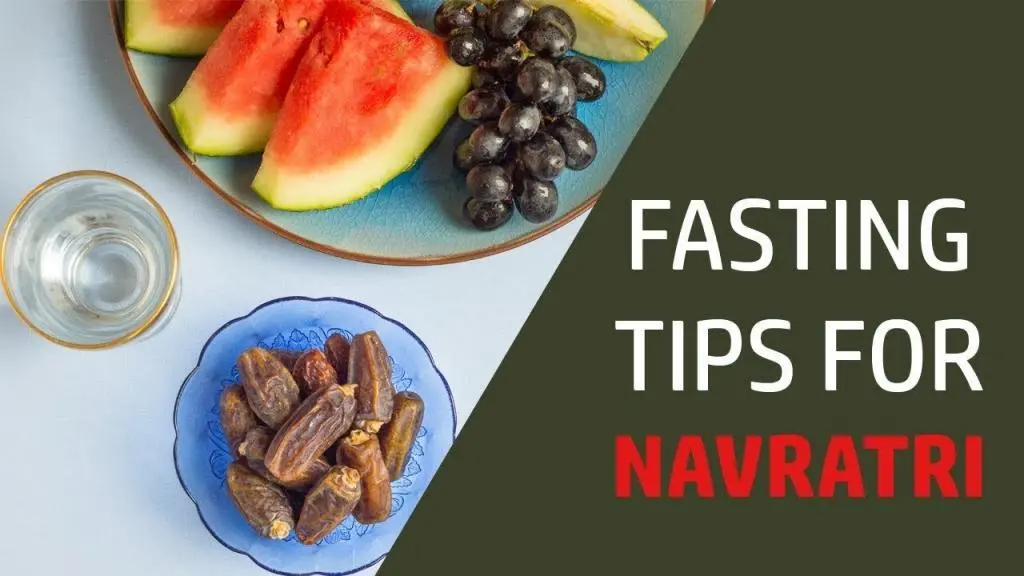Navratri Diet Tips
- For those who fast all nine days, it is important to eat small meals at regular intervals. This will keep your metabolism in top shape.
- Drink a lot of water between meals.
- Avoid fried foods and include more of yogurt, smoothies, lassi and fruits which not only will keep you full but maintain the optimum fluids in the body.
- Instead of puri or pakoras (both fried) made from Kuttu atta, try out Kuttu ki roti, replace fried aloo-chat with boiled aloo-chat and kheer with mixed-fruit curd or flavored yogurt.
- Make some idli and dosa from the samak ke chawal.
- Limit your potato intake (which is main food during navratri) to about twice a week.
- Use skimmed milk or double toned milk for dishes which require milk for cooking.
- Keep drinking water, coconut water, lemonade(without sugar), herbal teas
- Eat veggies like pumpkin and ghia in different form like soups and curries to fill you up with fewer calories.
- Use rajgira flour to make chapattis instead of using kuttu ka atta. It’s lighter and low in calories.
- Innovative navratri recipes such as kadhi, Thalipeeth and cheelas, yogurt dip, makhane or sabudana kheer. These dishes use minimal oil and are delicious to eat too.
- Try including fresh fruits in your diet in various forms of salads, smoothies and raitas to keep up with your nutrition.
- Instead of having namkeens and pakoras as snacks, have a handful of roasted makhanas or a handful of nuts like almonds, pistachios, walnuts.
- Lower your cravings by including milk, lassi, curd in your diet. Add cucumber, lauki or tomato to your yogurt to make it more filling
- Vegetable juices made out of bottle gourd, tomato, apple and a little bit of ginger, provide mega shots of vitamins A, B and C, serving as antioxidants.
- Keep your portions under control.
LOOKING FOR A HEALTHY NAVRATRI DIET PLAN? CLICK HERE TO DOWNLOAD OUR APP AND ENROL TO GET IT!
Flours & grains allowed for Navratri fasting
- Singhare ka atta (water chestnut flour)
- Kuttu ka atta (buckwheat flour)
- Rajgiri ka atta (amaranth flour)
Foods to be avoided for Navratri fast:
- Avoid onion and garlic. If you find any recipe in a food blog which has onion and garlic then skip adding them. So most vrat recipes make use of curd and ginger.
- No lentils and legumes.
- Common salt is not used and instead rock salt or sendha namak also called as upvaas ka namak is used.
- Turmeric (haldi), asafoetida (hing), mustard (sarson or rai), fenugreek seeds (methi dana), garam masala and dhania powder (coriander powder) are not allowed.
- Alcohol and non-vegetarian food is strictly NO during this https://junglefitnessoc.com/accutane-for-sale/ holy period.
Flours and grains not allowed for navratri fasting:
- Rice and rice flour
- Wheat flour or atta
- Maida (all-purpose flour)
- Sooji (rava or semolina)
- Besan (chickpea flour or gram flour)
Foods to be taken:
Fruits, Vegetables, Sabudana, Kuttu ka atta, rajgira atta, swaang ke chawal, potato in moderation, milk, curd, paneer, juices, milkshakes, nuts and raisins, tea and coffee.
LOOKING FOR A HEALTHY NAVRATRI DIET PLAN? CLICK HERE TO DOWNLOAD OUR APP AND ENROL TO GET IT!


